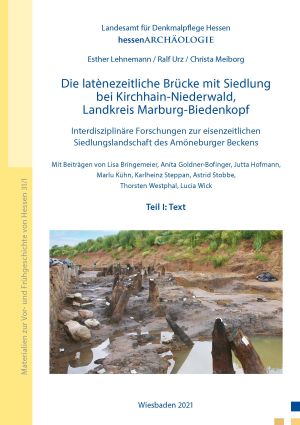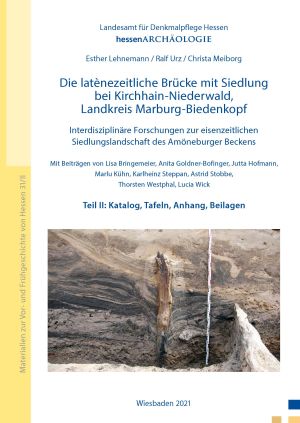Urz, Ralf
Die prähistorischen Auensiedlungen des Lahntals um die Gemeinde Weimar, Landkreis Marburg-Biedenkopf (Hessen): Archäobotanische und geoarchäologische Forschungen zum Wandel von Landwirtschaft und Umwelt zwischen Frühneolithikum und Mittelalter
30 years of excavations by the Hessian State Archaeology Department uncovered a considerable amount of pre- and early historic settlements in Marburg's Lahn Valley. This has fundamentally changed the former image of an inaccessible floodplain unsuitable for permanent settlement. This study provides a geoarchaeological perspective on our understanding of local settlement processes as well as archaeobotanical insights into developments in agriculture and of the environment between the Early Neolithic and the Middle Ages. The case study shows that the floodplains of low mountain rivers were no purely natural landscapes, but conceal cultural landscapes reaching far back into prehistoric times and therefore worthy of protection.
Die latènezeitliche Brücke mit Siedlung bei Kirchhain-Niederwald, Landkreis Marburg-Biedenkopf: Interdisziplinäre Forschungen zur eisenzeitlichen Siedlungslandschaft des Amöneburger Beckens
Between 2008 and 2012 hessenARCHÄOLOGIE uncovered a spectacular site of the later Iron Age in the northern Amöneburg Basin near Niederwald – the remains of a 21-metre-long wooden yoke-pile bridge that had served as a river crossing from around the middle of the 3rd to the middle of the 2nd century BC. It proved to be a stroke of luck that in 2011 400 m west of the bridge the remains of a contemporary settlement came to light, whose earliest traces date back to the Hallstatt period. The result of the in-depth interdisciplinary research, funded by the German Research Foundation (DFG), is a meticulous two-volume study that doesn’t just look at the local Iron Age remains, but draws a picture of the Amöneburg Basin during the 1st millennium BC in terms of landscape and settlement history.
Volume 2, s. hier.
Die latènezeitliche Brücke mit Siedlung bei Kirchhain-Niederwald, Landkreis Marburg-Biedenkopf: Interdisziplinäre Forschungen zur eisenzeitlichen Siedlungslandschaft des Amöneburger Beckens
Between 2008 and 2012 hessenARCHÄOLOGIE uncovered a spectacular site of the later Iron Age in the northern Amöneburg Basin near Niederwald – the remains of a 21-metre-long wooden yoke-pile bridge that had served as a river crossing from around the middle of the 3rd to the middle of the 2nd century BC. It proved to be a stroke of luck that in 2011 400 m west of the bridge the remains of a contemporary settlement came to light, whose earliest traces date back to the Hallstatt period. The result of the in-depth interdisciplinary research, funded by the German Research Foundation (DFG), is a meticulous two-volume study that doesn’t just look at the local Iron Age remains, but draws a picture of the Amöneburg Basin during the 1st millennium BC in terms of landscape and settlement history.
Volume 1, s. hier.









